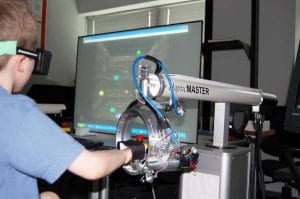To the Members of the Portfolio Committee,
Prior to being a college student, my writing abilities have never been so good. I’d struggle in all my classes due to not stepping out of my comfort zone. Taking this course (ENG-101-A8W) had me a bit nervous as to English was never my favorite subject and I didn’t care too much for Robots. After, completing a few assignments to this course, I started to like how easy it was becoming and how my writings turned out. I was finally coming out of my shell and learning new things.
The first assignment I present to you was our first major assignment. It was a memoir that we were to compose from the viewpoint of five to eight lifeless and moderately comparative instruments that assist you in playing a certain role. When receiving this assignment, I was extremely excited because I got to write about what I essentially use at work. But I was also aggravated because I couldn’t pinpoint what I exactly wanted to write about. I made sure to get into details about how each tool is used differently to moderate behavior. This essay felt essay to me and help me open my shell because everything I was writing about, I used on an everyday basis.
The second assignment I present to you was my third major assignment in this course. This assignment was annotated bib and a short report. I had to choose a topic to write about. It could’ve been about anything as long as its robot related. I had to research the topic as well as formulating a research question, finding and evaluating the sources using those sources in my own writing, and citing them appropriately. This assignment I chose to write about children who have Cerebral Palsy (CP) because CP is a group of disorders that affect a person’s ability to move and maintain balance and posture and could benefit with a source of robot depending on their severity. I enjoyed having the ability to pick anything I wanted to write about because it gave me the chance to learn more about a topic that I’m interested in/ a topic that I work with. Writing this assignment became like second nature to me the only trouble I had with it was evaluating the sources.
The third assignment I Present to you was my final assignment. This assignment was a Robot Proposal on whether a robot should or shouldn’t be used in whatever field I chose. I chose to write that robots should not be used as teachers because they lack the emotional view of a human. I believe I only wrote one research paper in high school. It was nothing compared to this. I struggled with this assignment not with the research part of it but with the citation part. I searched the internet on different websites to find paper articles and scholarly sources to make sure that citations were credible.
This course made me ‘spread my wings and fly’. I was not pleased with my writing skills before, but this course helped improve my skills and now has made me a better writer. I enjoyed learning new facts about robots and how I could incorporate my job into my school work. I’m hoping that when I take English 101 that I can use my skills I learned this semester and carry them over.
Thank you for your time,
Alicia Lucas



